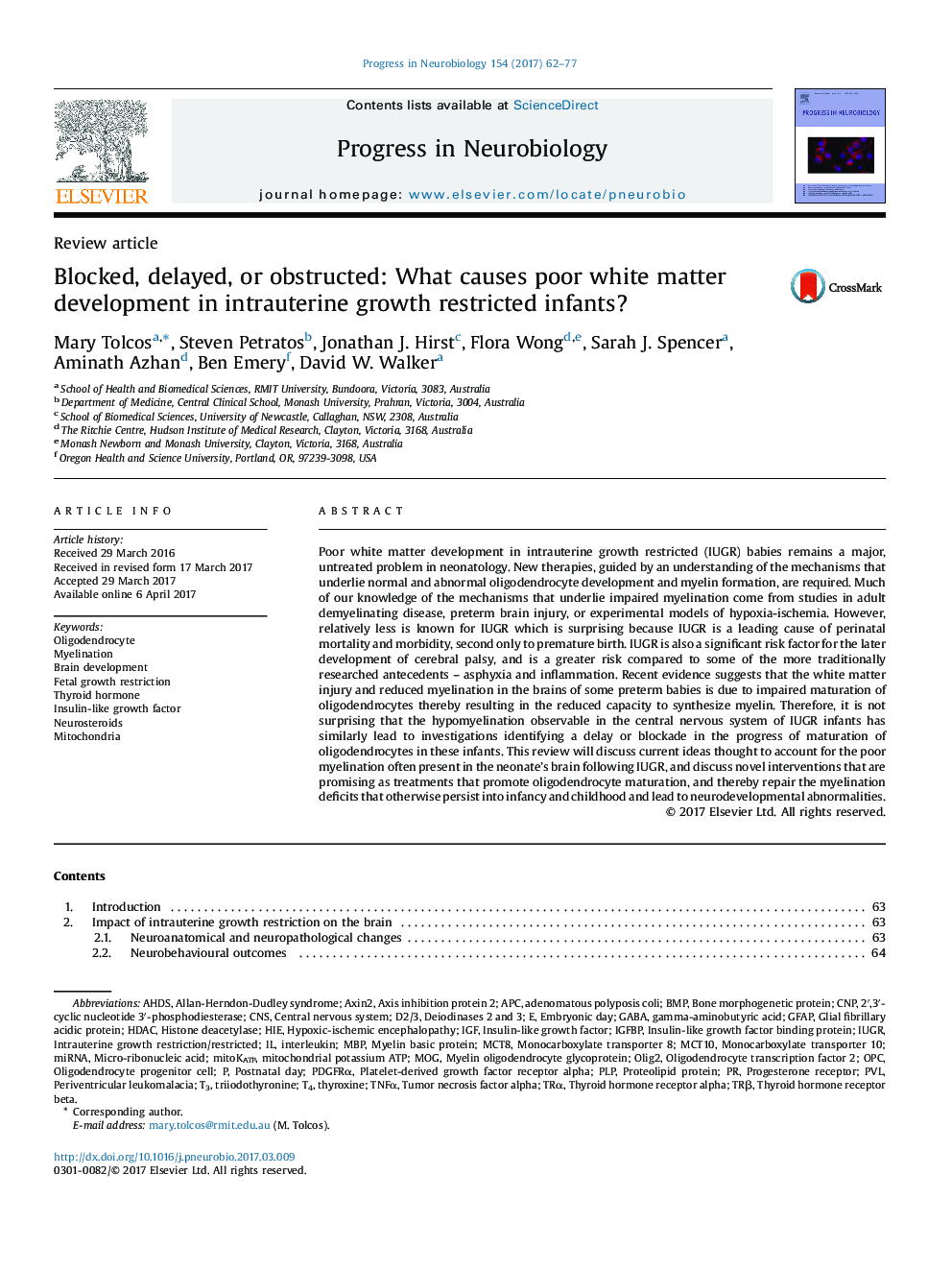| Article ID | Journal | Published Year | Pages | File Type |
|---|---|---|---|---|
| 5739127 | Progress in Neurobiology | 2017 | 16 Pages |
â¢Intrauterine growth restriction (IUGR) is second only to prematurity as the leading cause of morbidity and mortality.â¢White matter development is impaired in the brain following IUGR.â¢Delayed oligodendrocyte maturation and myelination contribute to poor white matter development in IUGR.â¢Cellular, molecular and endocrine factors are thought to underlie impaired oligodendrocyte maturation and myelination in IUGR.â¢Putative therapies to promote oligodendrocyte maturation and myelination in IUGR are discussed.
Poor white matter development in intrauterine growth restricted (IUGR) babies remains a major, untreated problem in neonatology. New therapies, guided by an understanding of the mechanisms that underlie normal and abnormal oligodendrocyte development and myelin formation, are required. Much of our knowledge of the mechanisms that underlie impaired myelination come from studies in adult demyelinating disease, preterm brain injury, or experimental models of hypoxia-ischemia. However, relatively less is known for IUGR which is surprising because IUGR is a leading cause of perinatal mortality and morbidity, second only to premature birth. IUGR is also a significant risk factor for the later development of cerebral palsy, and is a greater risk compared to some of the more traditionally researched antecedents - asphyxia and inflammation. Recent evidence suggests that the white matter injury and reduced myelination in the brains of some preterm babies is due to impaired maturation of oligodendrocytes thereby resulting in the reduced capacity to synthesize myelin. Therefore, it is not surprising that the hypomyelination observable in the central nervous system of IUGR infants has similarly lead to investigations identifying a delay or blockade in the progress of maturation of oligodendrocytes in these infants. This review will discuss current ideas thought to account for the poor myelination often present in the neonate's brain following IUGR, and discuss novel interventions that are promising as treatments that promote oligodendrocyte maturation, and thereby repair the myelination deficits that otherwise persist into infancy and childhood and lead to neurodevelopmental abnormalities.
